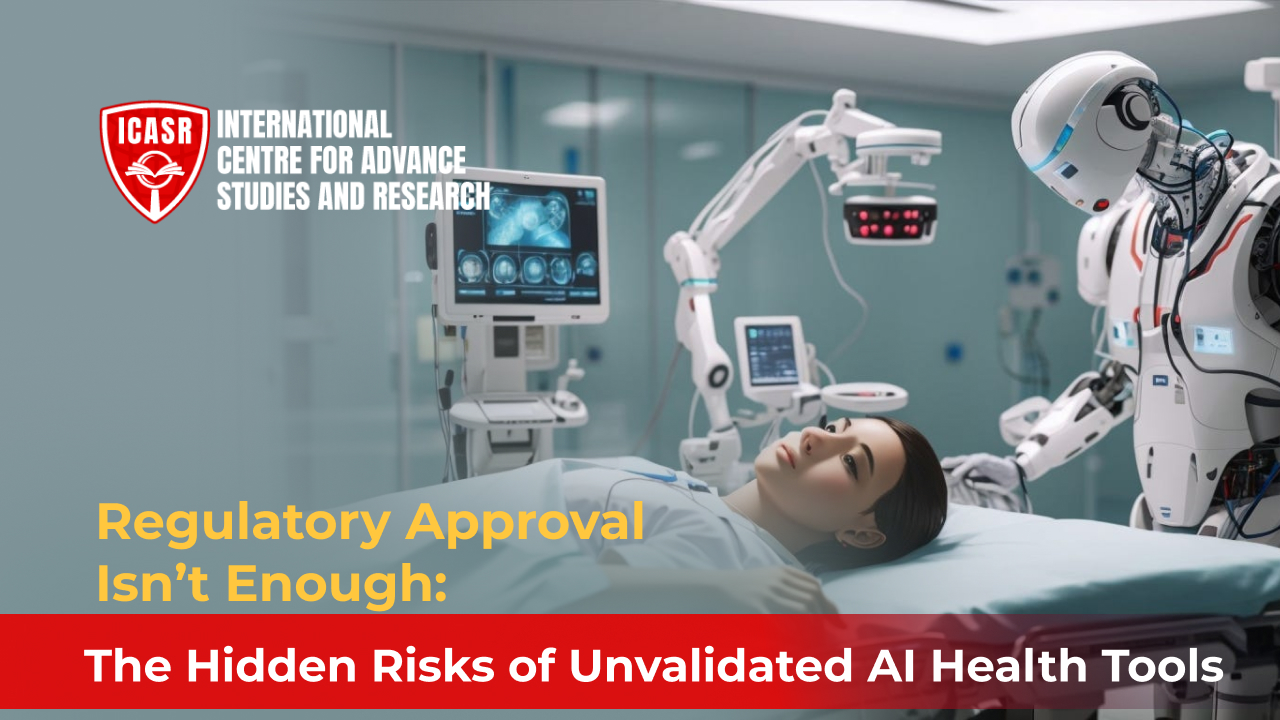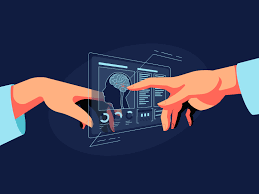Regulatory Approval Isn’t Enough: The Hidden Risks of Unvalidated AI Health Tools

As you come along studying different AI-based medical devices today, you may end up thinking that they are more of a risk than anything else. To begin with, some machines are known to give the wrong results even if they do function properly. In addition, their design may make them less useful in preventing serious problems such as cancer and heart attacks from occurring in individuals who may need them most. Hence, it is crucial for everyone involved in the production and usage of these instruments to recognize this fact and make more efforts so that we can limit or completely eliminate any power that could cause harm.
The Promise and Perils of AI Health Tools:
AI health tools, or artificial intelligence healthcare tools, are different applications of artificial intelligence technology to various aspects of healthcare. With the help of machine learning algorithms, these tools analyze huge volumes of medical data, recognize patterns therein and then proceed to make predictions or provide recommendations. AI health tools provide numerous advantages, including:
- Greater Accuracy: AI algorithms are able to analyze huge medical datasets with better precision than humans thereby resulting in more accurate diagnoses and treatments.
- Enhanced Productivity: Streamlining routine operations can help reduce admin loads allowing healthcare personnel more time for patients hence leading to improved quality of service offered.
- Customized Medication: For instance, AI can design individualised therapeutic regimens that consider patients' genotype, and previous illnesses among other determinants.
On the other hand, the advantages of AI healthcare tools are accompanied by risks that cannot be underestimated:
- Bias: Some bias already existing in the data that AI algorithms train on may be incorporated into them thereby propagating unequal treatment.
- Black Boxing Problem: Some Agroforestry parameters are difficult to interpret in determining their output this leads to two things: first people don't know what contains their machines' "brains" hence making them accountable because they don't provide reasons why they made any decisions at all.
- Data Privacy Concerns: When sensitive patient information stored in these systems is used for training purposes, questions arise as to whether such a course would really assure its confidentiality and safety from unauthorized users.
The Limitations of Regulatory Approval:
Although essential, regulatory approval does not ensure the safety and efficacy of AI health tools. There are several limitations:
- Retrospective Evaluation: Regulatory approval processes often rely upon retrospective examination of historical data that may not truly represent actual field performance.
- Limited scope: Regulatory bodies may look at only certain aspects like accuracy versus safety in AI healthcare tools neglecting other important parameters, for instance, equity and explainability.
- Time-Consuming Process: The lengthiness and expense involved in regulatory approval can inhibit valuable AI technology uptake.
The Importance of Comprehensive Validation:
The validation is crucial in order to lower the threats related to AI in health devices. This indicates that the tool must be subjected to a difficult and rigorous process of evaluation and testing for it to correspond to the required standards of performance, safety and efficacy. Some of the essential elements of a complete validation are:
- Data Quality Evaluation: Check that the information used in training and evaluating an AI tool is valid, typical and impartial.
- Performance Measurement: Estimating the tool's precision, sensitivity, specificity and other suitable indicators in a diverse clinical context.
- Safety and efficacy Evaluation: Looking at its possible dangers in addition to advantages, including how ut influences patient outcomes.
- Explainability and Interpretability: Making sure clinicians along with patients can understand as well as clarify the choices made by means of the device.
- Ethical Issues: Discussion on subjects like biasness, fairness plus confidentiality must covered too.
Case Study: The Risks of Unvalidated AI Imaging Tools:
These AI imaging tools have shown great promise in some areas like early cancer detection or medical imaging analysis. However, unverified AI imaging tools can have dire consequences. For instance, a study carried out University of California at San Francisco revealed that an AI tool designed to detect breast cancer had higher false positives compared to human radiologists. this was likely to result in unwanted biopsies, psychological anguish and inflated bills in the health care system.
How AI Health Tools Work:
Usually, AI health tools work in this way:
- Data Gathering and Initial Cleaning: Collecting pertinent healthcare information like patient history, images, and genetic material among others then refining it for examination.
- Development of Algorithms: Constructing as well as indoctrinating artificial intelligence mechanisms to bring out the underlying design patterns and connections within the information.
- Model Checking: This entails scrutinizing how an AI model performs by means of a control data arrangement or using any other way to check if it has been effective or accurate.
- Setting Forth and Supervising: Integrating the computerized guide to wellness into clinical workflow while on a tip toe monitoring its performance continuously hence discovering and rectifying errors as they arise.
The Role of Healthcare Organizations and Technology Providers:
AI healthcare tool's efficient and safe usage is largely dependent on health organizations and service providers as their key role players. They must follow these principles:
- Invest in Validation: To deploy AI health tools, and allocate funds for its thorough testing before putting it out for use.
- Collaborate with Experts: Work with professionals specializing in AI technology, medical care, and code of ethics so as to guarantee that the validation steps are all-inclusive and painstakingly followed.
- Prioritize Transparency: Let everyone know what is impossible or dangerous about using AI healthcare devices.
- Continuously Monitor and Update: Ensure regular assessments on how well the devices perform together with making improvements whenever a new problem comes up.
Though AI health tools have enormous capabilities for enhancing healthcare services, their implementation should be done cautiously. Regular approval alone does not guarantee the safety and efficiency of these instruments. For this reason, comprehensive validation, continuous monitoring, and ethical issues are key elements in reducing risks as well s increasing the advantages of AI in health care. We can use AI to promote positive health results for individuals while safeguarding public health if we put validation and transparency first.

